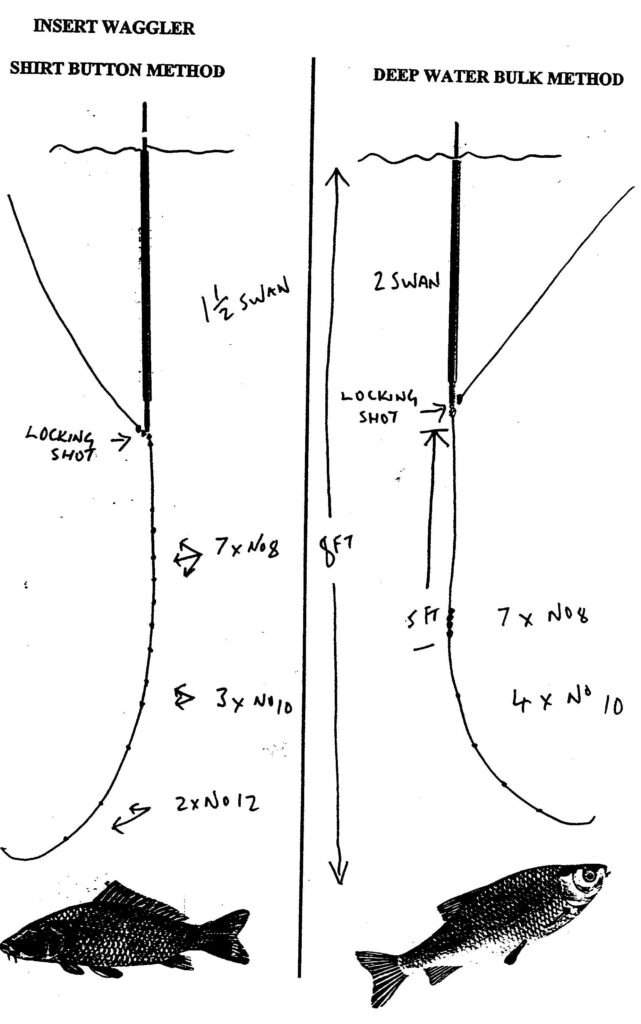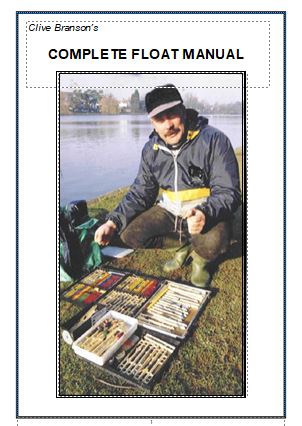THE INSERTED PEACOCK WAGGLER

🪶 Inserted Peacock Waggler Float
The Inserted Peacock Waggler is a refined and highly sensitive version of the classic straight peacock waggler.
By inserting a short section of fine tip material (typically 1–3 inches) into the top of the float, this design provides greater bite indication and better control for delicate fishing situations.
🏗️ Design and Construction
-
Main body: Natural peacock quill
-
Insert tip: 1″–3″ piece of peacock, cane, nylon, or sarcandas
-
Finish: Sanded, straightened, and painted with interchangeable colour options
This design offers several key advantages:
-
🎯 Greater sensitivity for detecting shy bites
-
⬆️ Perfect for lift bites and bites “on the drop”
-
🔄 Interchangeable inserts, making it easy to swap lengths and colours to match conditions
🎨 Insert Colours and Visibility
The colour of the insert plays a major role in visibility:
-
🟡 Yellow or white: Best against dark backgrounds such as trees or hedges.
-
🟠 Orange/blaze: A versatile all-round option that works in most light conditions.
-
⚫ Black: Ideal against a light sky or on rippled water.
Selecting the right insert colour ensures you see the smallest of indications, even at long range.
🌊 Fishing Applications
Inserted wagglers are incredibly versatile, working equally well on stillwaters and rivers.
-
Rivers:
-
Small rivers: 1–1½ swan shot
-
Larger rivers: 2–3 swan shots
-
-
Stillwaters / canals:
-
Typically 3–4 BB shot
-
I like to dot the insert low in the water. This maximises bite detection, allowing me to spot the faintest tremor or lift bite, and pick up bites on the drop as the bait falls through the water.
🪝 Shotting Pattern
My preferred shotting pattern for insert wagglers is the shirt-button style, with decreasing shot sizes toward the hooklength:
-
7 × No. 8
-
3 × No. 10
-
2 × No. 12
✅ This setup is perfect for:
-
Natural, slow-on-the-drop presentation
-
Fishing slightly over depth without the float dragging under
-
Catching roach, dace, chub, and other midwater feeders
🌬️ Line Control and Striking Technique
-
Sinking the line between float and rod tip is standard practice, helping to prevent bowing caused by wind.
-
However, surface line control can also be used when closer in — giving direct contact with the float for fast strikes.
-
On stillwaters at distance: always sink the line, and when striking, lift upwards to remove any slack or “snake” in the line.
-
On rivers: fish slightly downstream, sink the line, and strike into the bow for a soft buffer strike.
🧼 Tip: Use a line sinking agent like Fuller’s earth or mild detergent to help the line cut through the surface film.
🧵 Line and Retrieval Tips
-
Ideal waggler line: 0.12 mm diameter (can be heavier for larger floats or bigger fish).
-
To avoid hooklength twist, reel in the float on the surface whenever possible.
✅ In summary:
-
A refined version of the peacock waggler offering maximum sensitivity
-
Perfect for shy biting fish and on-the-drop presentation
-
Interchangeable inserts for changing light and water conditions
-
Effective on rivers, canals, and stillwaters
-
Superb control over line and shotting for precise presentation
A couple of illustrations from the book

The Complete Float Manual is Now Available with over 167 pages of content CLICK ON BOOK TO ORDER

📘 Download the Complete Float Manual – Instant Access
Bring decades of float-fishing knowledge straight to your screen.
Written by World Champion Clive Branson, The Complete Float Manual is a 167+ page eBook packed with practical techniques, classic float designs, diagrams, and championship-winning methods.
✅ Learn how to use wagglers, stick floats, pole floats and more
✅ Discover the history and evolution of float fishing
✅ Get pro tips and tactics used at the highest level
✅ Ideal for beginners and experienced match anglers alike
💻 Instant Download (PDF) — no waiting, no shipping
💳 Secure checkout with PayPal
👉 Order now and start reading within minutes.